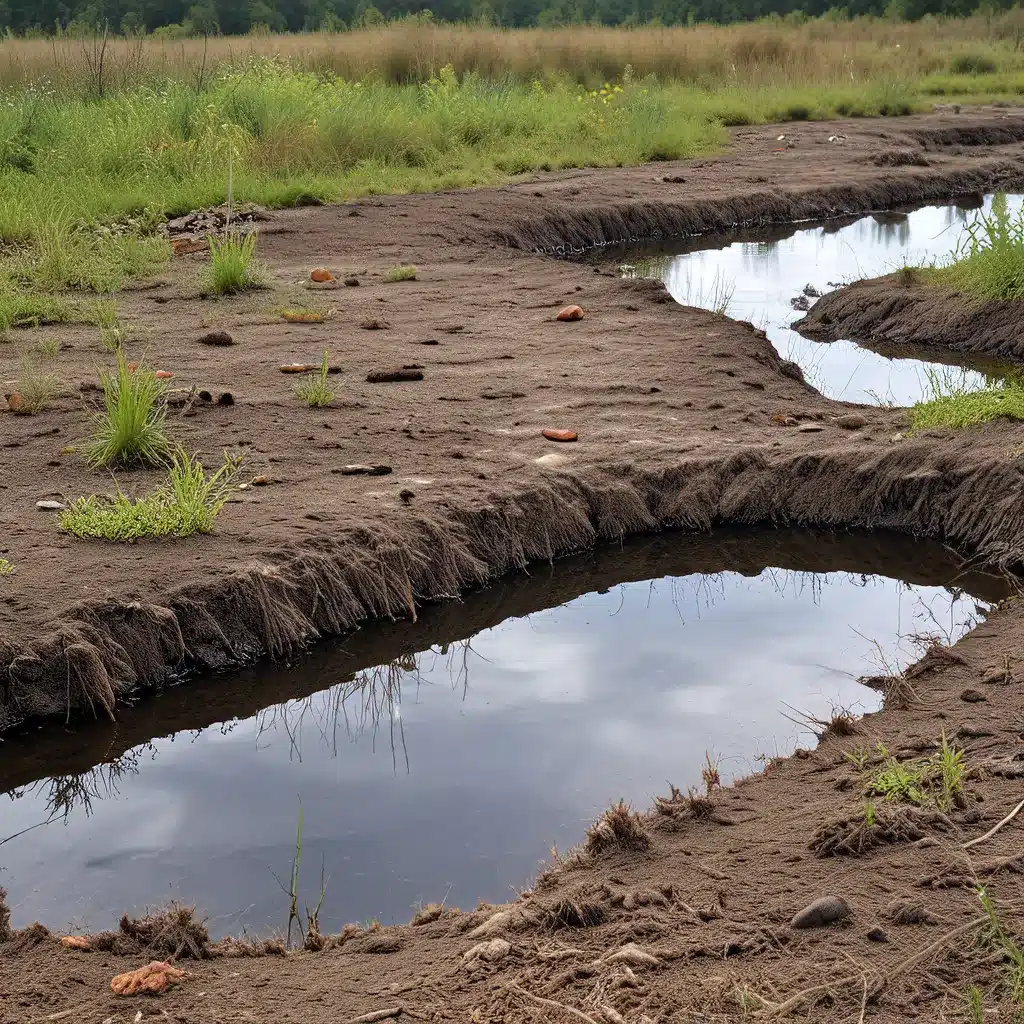
Microbes to the Rescue: How Nature’s Clean-Up Crew Can Heal Our Planet
You know, there’s this whole fascinating world of microscopic creatures that’s been quietly working overtime to keep our environment healthy and thriving. I’m talking about the unsung heroes of the natural world – the humble microbes. These little guys may be small, but they pack a powerful punch when it comes to environmental restoration.
Let me paint you a picture. Imagine a heavily polluted site – maybe an old industrial area or a neglected landfill. The soil is contaminated, the groundwater is murky, and the air is thick with toxic fumes. It’s an environmental disaster zone, right? Well, that’s where the microbes come in, ready to work their magic.
These tiny organisms possess a remarkable ability to break down and metabolize all sorts of pollutants, from heavy metals to organic compounds. It’s like they’re nature’s very own cleanup crew, happily munching away on the nasty stuff and turning it into something less harmful. And the best part? They do it all without any fancy equipment or specialized training – just their own little biochemical superpowers.
Researchers have found that microbes can be harnessed for a process called bioremediation, which is essentially using these microscopic marvels to restore contaminated environments to their former glory. It’s a natural, cost-effective, and eco-friendly way to tackle some of the biggest environmental challenges we face.
The Microbial Marvels at Work
Now, you might be wondering, “How exactly do these microbes work their magic?” Well, let me break it down for you.
Different types of microbes have evolved specialized enzymes and metabolic pathways that allow them to break down a wide range of pollutants. For example, some bacteria can gobble up oil spills, converting the hydrocarbons into harmless carbon dioxide and water. Other microbes can immobilize heavy metals like lead or mercury, essentially locking them away so they can’t contaminate the soil or water.
Researchers have found that the key to successful bioremediation is often about creating the right conditions for these microbes to thrive. This might involve adding nutrients to stimulate their growth, adjusting the pH levels, or introducing additional microbes that can work together to tackle the problem.
It’s a delicate balance, but when you get it right, the results can be truly remarkable. I’ve seen cases where severely contaminated sites have been transformed into lush, vibrant ecosystems teeming with life, all thanks to the tireless efforts of these microbial marvels.
Bioremediation in Action: Case Studies
Let’s take a closer look at a few real-world examples of bioremediation in action, shall we? These stories really highlight the power of harnessing microbes for environmental restoration.
The Exxon Valdez Oil Spill: Back in 1989, the oil tanker Exxon Valdez ran aground in Alaska’s Prince William Sound, spilling millions of gallons of crude oil into the pristine waters. It was an ecological disaster of epic proportions. But scientists soon realized that certain naturally-occurring oil-degrading bacteria could be the key to cleaning up the mess.
They introduced these microbes to the affected areas, along with nutrients to help them thrive. Over time, the bacteria feasted on the oil, breaking it down into less harmful compounds. It was a slow but steady process, but within a few years, the once-devastated ecosystem had made an impressive recovery.
Heavy Metal Cleanup in India: In another example, researchers in India have been using bioremediation to tackle the problem of heavy metal contamination in the country’s soil and water. They’ve identified certain bacteria and fungi that can bind to and immobilize metals like lead, cadmium, and chromium, preventing them from leaching into the environment.
By introducing these microbes to contaminated sites, they’ve been able to significantly reduce the levels of heavy metals, making the soil and water safe for agriculture, drinking, and other uses. It’s a brilliant example of how bioremediation can be a game-changer for environmental cleanup.
Cleaning Up Urban Waste: And let’s not forget the challenges of managing the mountains of waste generated by our ever-growing cities. Researchers have found that composting and other bioremediation techniques can be highly effective in breaking down and recycling organic waste, turning it into nutrient-rich soil that can be used to nourish gardens and green spaces.
By harnessing the power of microbes, we can divert tons of waste from landfills and incinerators, reducing the environmental impact of our urban lifestyles. It’s a win-win for both the planet and the people who call these cities home.
The Future of Bioremediation: Endless Possibilities
As you can probably tell, I’m pretty excited about the potential of bioremediation. And the truth is, we’ve only just scratched the surface of what these remarkable microbes can do.
Inland Waters, the water treatment and environmental services company, is at the forefront of this field, constantly exploring new ways to harness the power of microbes for environmental restoration. From advanced bioreactor technologies to cutting-edge phytoremediation techniques, they’re pushing the boundaries of what’s possible.
And the really exciting part? The scientific community is making new discoveries all the time, uncovering hidden microbial superpowers that could revolutionize the way we approach environmental cleanup. Who knows what the future holds? Maybe one day, we’ll have microscopic helpers that can gobble up plastic waste, extract precious metals from e-waste, or even purify the air we breathe.
The possibilities are truly endless. All we have to do is open our eyes to the incredible potential of these humble, hardworking microbes. They may be small, but together, they have the power to transform our world and heal the environment, one ecosystem at a time.
So, the next time you see a patch of soil or a body of water that’s been ravaged by pollution, remember the microbial marvels that are ready and waiting to lend a hand. With a little help from these natural-born cleaners, we can restore the balance and breathe new life into our planet. After all, what could be more powerful than harnessing the incredible abilities of Mother Nature’s own cleanup crew?


